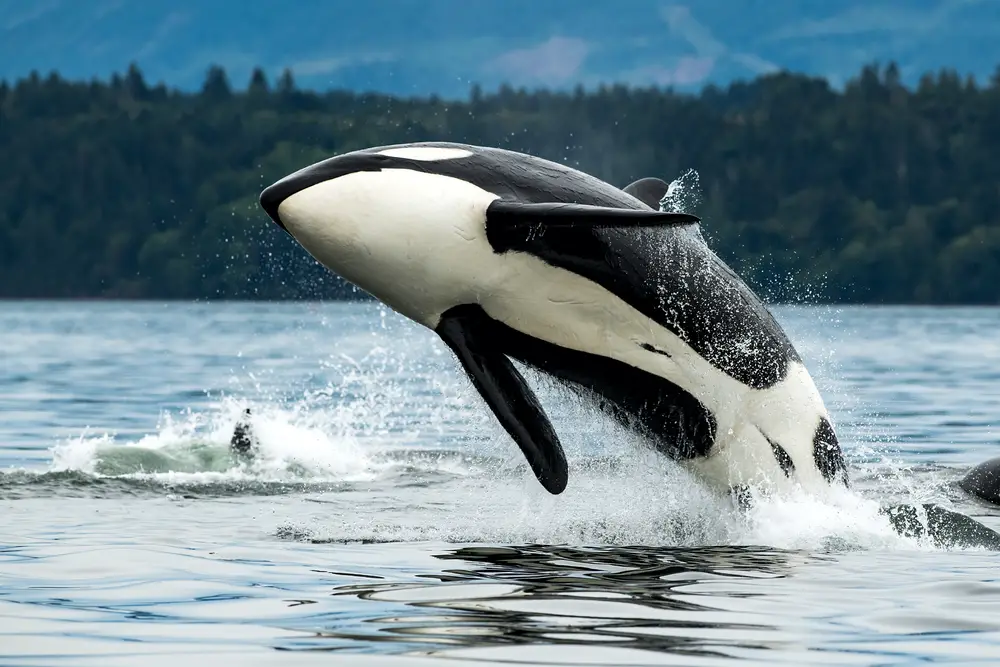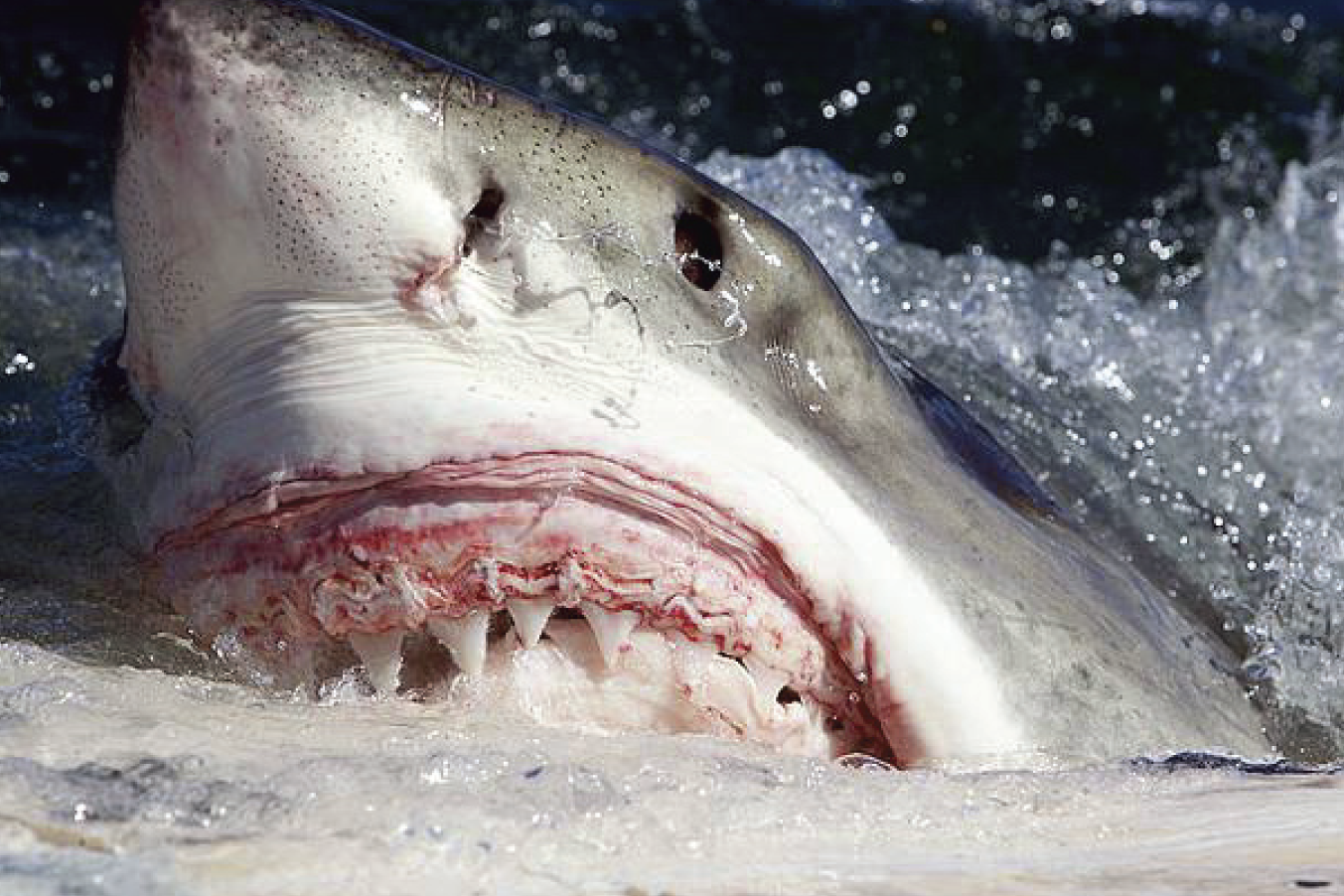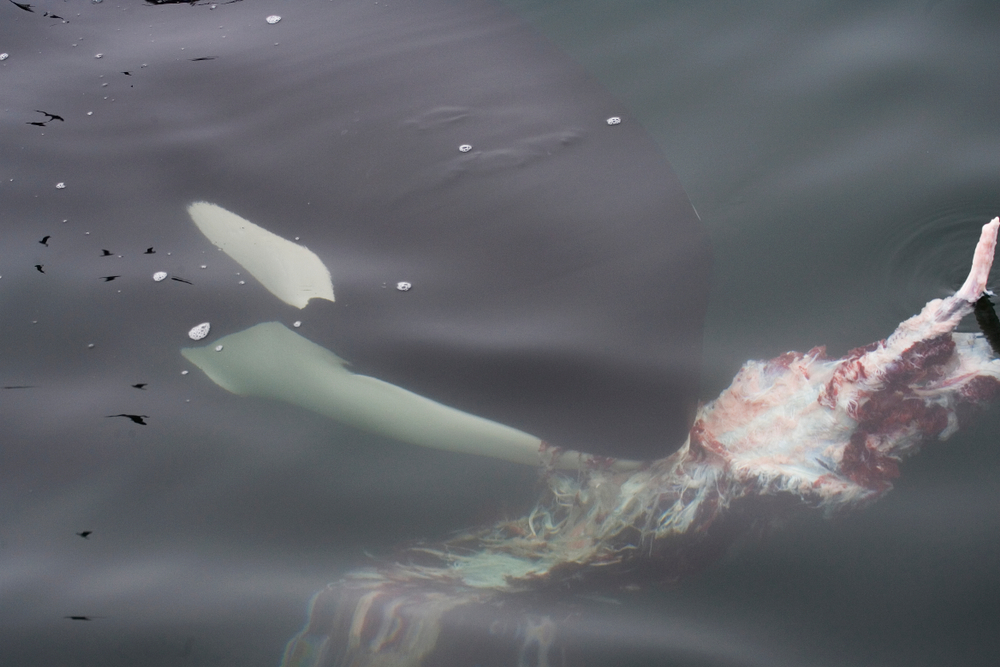1. It Keeps Them Hydrated in a Way You Wouldn’t Expect

Killer whales may live in the ocean, but they don’t drink seawater. Instead, they get their hydration from the food they eat—mainly fish, which contain a high percentage of water. But here’s the problem: in captivity, their diets are controlled, and the water content in frozen fish isn’t always enough to keep them properly hydrated. Enter ice. Trainers feed ice cubes, crushed ice, and even giant ice blocks to supplement their water intake, ensuring they stay hydrated without gulping down salty water. It’s like handing out a popsicle on a hot day—only, instead of a sugar rush, these whales get a much-needed dose of H₂O.
But hydration isn’t the only benefit. Since whales don’t sweat (for obvious reasons), they rely on other methods to regulate body temperature. In the wild, deep dives into colder waters help cool them down, but in aquariums, their options are limited. Ice serves as a cooling aid, helping them maintain a comfortable body temperature, especially in warmer climates. So, when you see a killer whale munching on an ice block, it’s not just a snack—it’s a survival strategy disguised as a treat.
2. It Keeps Their Minds Sharp and Their Days Interesting

Imagine being one of the most intelligent creatures on the planet, stuck in the same space day after day. It would get boring fast. That’s where ice comes in—not just as food, but as entertainment. Trainers use ice blocks to engage killer whales in play, encouraging them to toss, chase, or balance them on their heads. It’s a mental workout as much as it is a physical one, keeping their problem-solving skills sharp while preventing boredom. Think of it as an orca version of a puzzle game—except the reward is a cool, crunchy bite instead of points on a screen.
This kind of enrichment is crucial. Killer whales in the wild face daily challenges—hunting, navigating vast ocean territories, and interacting with their pods. In captivity, those challenges are limited, so aquariums introduce ice as a way to simulate some of that natural engagement. It turns out that something as simple as a block of frozen water can make a huge difference in keeping these massive marine mammals mentally and physically stimulated.
3. It Helps Prevent Tooth Damage from Boredom Chewing

Killer whales are naturally curious, and when they don’t have enough stimulation, they develop some bad habits—one of the worst being chewing on tank walls and metal grates. This isn’t just a quirky behavior; it can cause serious damage to their teeth, wearing them down and even leading to painful infections. In the wild, their teeth are naturally worn down by hunting and tearing into prey, but in captivity, boredom chewing is a major concern. That’s where ice comes to the rescue.
By giving killer whales ice to crunch on, trainers redirect that chewing instinct toward something safe. Ice provides a satisfying crunch without the risk of damage, acting like a natural teething toy for these massive marine predators. Plus, since ice melts away, there’s no risk of them swallowing something harmful. It’s a simple but effective way to protect their dental health while keeping them entertained at the same time.
4. It Encourages Natural Foraging Behavior

In the wild, killer whales don’t just get their food handed to them in neatly portioned fish buckets—they have to work for it. Hunting requires patience, strategy, and skill, which keeps their minds and bodies engaged. But in captivity, feeding time is often too predictable, so trainers use ice to add an extra layer of challenge. Instead of simply handing over fish, they might hide pieces of food inside large ice chunks, forcing the whales to figure out how to get to their meal.
This technique helps mimic the mental effort required in the wild. Some whales use their powerful jaws to break the ice apart, while others experiment with different methods, like flipping the ice against the water’s surface to crack it open. It’s like an icy puzzle, keeping their natural instincts sharp while making mealtime more engaging. When a simple snack turns into a strategic challenge, it makes a huge difference in their overall well-being.
5. It Helps Soothe Sore Gums and Teeth

Just like humans, killer whales can experience dental pain, especially if they’ve had past injuries or wear-and-tear on their teeth. In some cases, captive whales have undergone dental procedures, leaving their gums sensitive. Ice acts as a natural pain reliever, numbing sore areas and providing gentle relief without the need for medication. Trainers often notice that whales with dental issues are the first to grab ice when offered, instinctively using it to soothe discomfort.
This cooling effect is particularly useful after routine checkups, where trainers examine their teeth for signs of infection or damage. Since orcas can’t exactly ask for a painkiller, ice becomes their go-to remedy. It’s a simple but effective way to keep them comfortable, proving that sometimes, nature’s best medicine is just frozen water.
6. It Helps Regulate Their Appetite

Killer whales in captivity don’t have the same eating schedule as their wild counterparts, who hunt based on opportunity and necessity. Instead, their meals are planned and portioned, which means they don’t always have something to chew on when they might want to. Ice serves as a filler, keeping them occupied between meals without adding unnecessary calories. It’s like chewing gum for whales—keeping their mouths busy while they wait for their next proper feeding.
This method also helps trainers monitor each whale’s eating habits. If a whale suddenly loses interest in food but still enjoys ice, it might indicate an underlying health issue. By offering ice regularly, trainers can track changes in appetite and detect potential problems early. It’s a surprisingly useful tool for monitoring overall health, all while giving the whales a refreshing, low-calorie treat.
7. It Strengthens Their Social Bonds

Killer whales are highly social animals, living in close-knit pods in the wild. In captivity, trainers work hard to maintain those social dynamics, and ice plays a surprisingly big role in that effort. Whales often share ice, pass it between each other, or engage in playful tug-of-war games with chunks of it. These interactions strengthen their bonds, reinforcing cooperation and social engagement in a controlled environment.
Sometimes, trainers even use ice as a training reward, encouraging teamwork between whales. For example, two whales might be asked to perform a behavior together, and when they succeed, they get a giant block of ice to break apart and share. This not only reinforces positive behaviors but also mimics the kind of communal experiences they’d have in the wild—just with a little more crunch.
8. It’s Just Plain Fun

At the end of the day, sometimes ice isn’t about hydration, health, or behavior—it’s just about having a good time. Killer whales love to play, and ice provides endless entertainment. Some toss it into the air like a toy, others balance it on their heads, and some even smash it against surfaces just to hear the sound. Watching a multi-ton predator gleefully batting around a chunk of ice like a kitten with a ball of yarn is a reminder that, despite their size and power, they’re still playful creatures at heart.
This kind of joy is essential for their well-being. A mentally and physically stimulated whale is a happy whale, and ice is an easy way to inject excitement into their daily routine. Whether they’re crunching it, tossing it, or sharing it with a friend, ice has become an unexpected but essential part of their care. So next time you see a killer whale chomping on an ice block, know that it’s more than just a snack—it’s a key ingredient in keeping them healthy, engaged, and, most importantly, happy.


